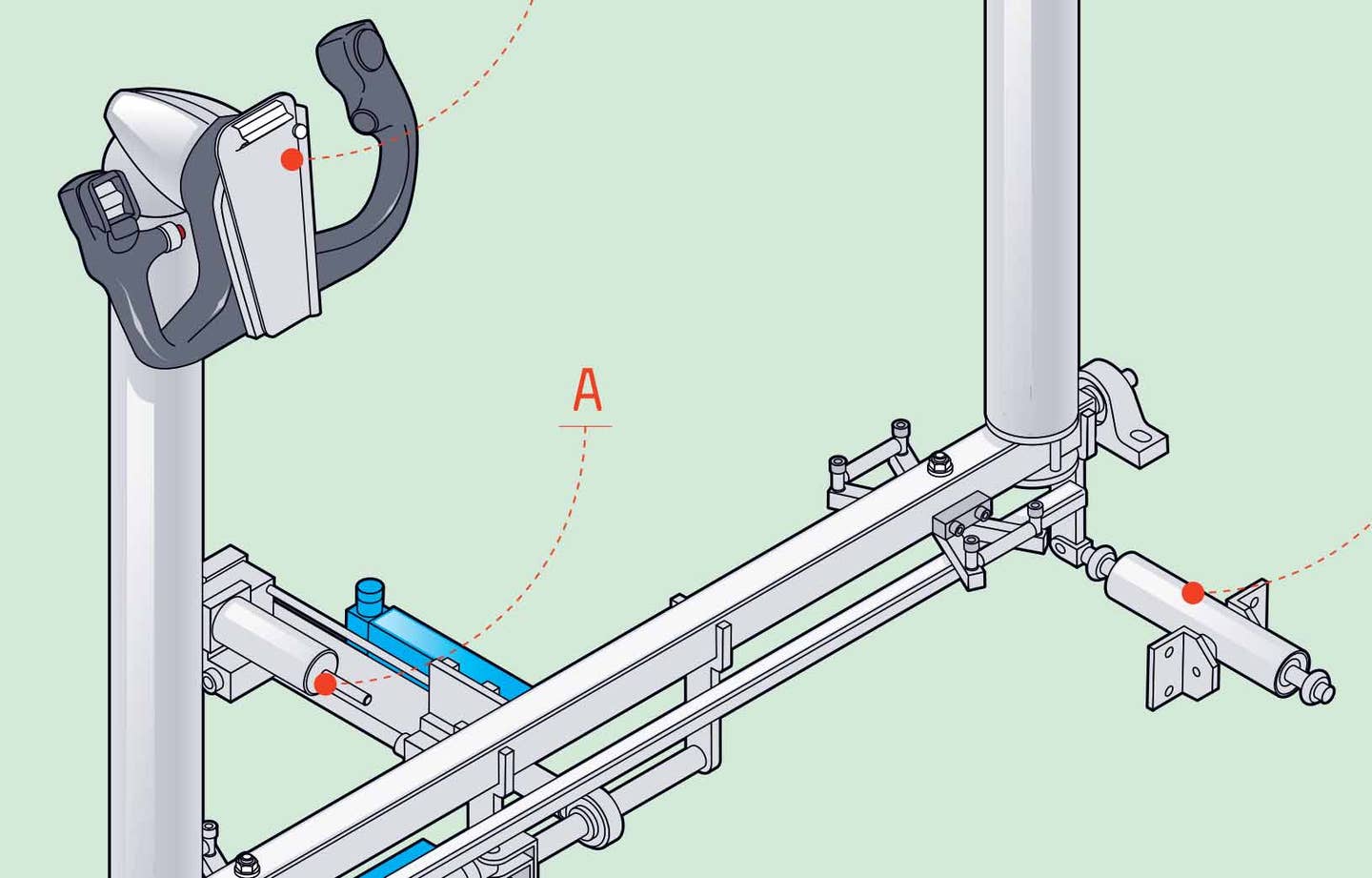
A stick shaker acts as a stall-warning device, while the stick pusher’s job is one of stall avoidance. Illustration by Tim Barker
Think of the stick shaker/pusher found in transport-category aircraft as a bit of a lazy pilot’s angle of attack indicator. Should the flying pilot become distracted enough that they fail to notice an increasing angle of attack, to a point where the wing is about to cease producing sufficient lift, an airplane equipped with a shaker/pusher system will jump in to try to save the day by reducing the angle of attack. More precisely, the stick shaker acts as a stall-warning device, while the stick pusher’s job is one of stall avoidance.
The shaker portion of an AOA indicator is nothing more than a specially created electric motor with a flywheel attached to a portion of the control wheel. When the AOA information gathered from the angle of attack vanes on the outside of the fuselage increases beyond a set value, a signal is sent to the electronic flight controller that serves as the brains of the system. This computer compares the current signal against a default value that indicates safe flight. If the AOA exceeds that value, an electric motor attached to the control wheel spins a special flywheel that vibrates rapidly enough in fact to make the PIC’s hands shake and is impossible to ignore. The vibrations are a wake-up call to the flying pilot to reduce angle of attack, an action that changes the electrical signal to the flight controller, halting the shaker.
Should the pilot miss the vibrating control wheel due to a distraction, such as an engine failure or encounter with adverse weather, an additional flight controller signal triggers the next step, taking pitch control away from the pilot. When the system senses the proper electrical signal from the AOA, the stick pusher’s mechanical actuator will push the control wheel forward to reduce the angle of attack. If the pilot’s not holding the wheel tightly, it will yank it right out of their hands. The pusher operates the same way at 5,000 feet agl or at 500 feet agl, so if a stall occurs close to the ground, the seconds after activation can become eye-opening. The shaker and pusher often fire in rapid succession, so should the pilot attempt to fight the pusher by pulling the control wheel back to raise the nose, the AOA senses the same stalling wing and will push the nose down once again.
Of course there are variations of the traditional stick shaker/pusher first created decades ago by Boeing. In the case of the shaker/pusher system used by Textron Aviation for the new Citation Longitude, the company used the traditional flywheel and motor system to vibrate the control wheel. When it came to the pusher system, however, Textron chose an automated augmentation. The aircraft builder integrated the autopilot computer into the system, rather than employ an electro-mechanical device. The pusher function on the Longitude uses the autopilot servo to push the nose down to reduce the angle of attack.
To the uninitiated, a shaker/pusher alarm can seem quite violent, one reason the technology is typically demonstrated in a full-motion simulator. The action can also be experienced in an aircraft when the system is testing, normally during the pre-start checklist run during the first flight of the day, an event that only takes place with the aircraft firmly planted on terra firma.

Sign-up for newsletters & special offers!
Get the latest FLYING stories & special offers delivered directly to your inbox






